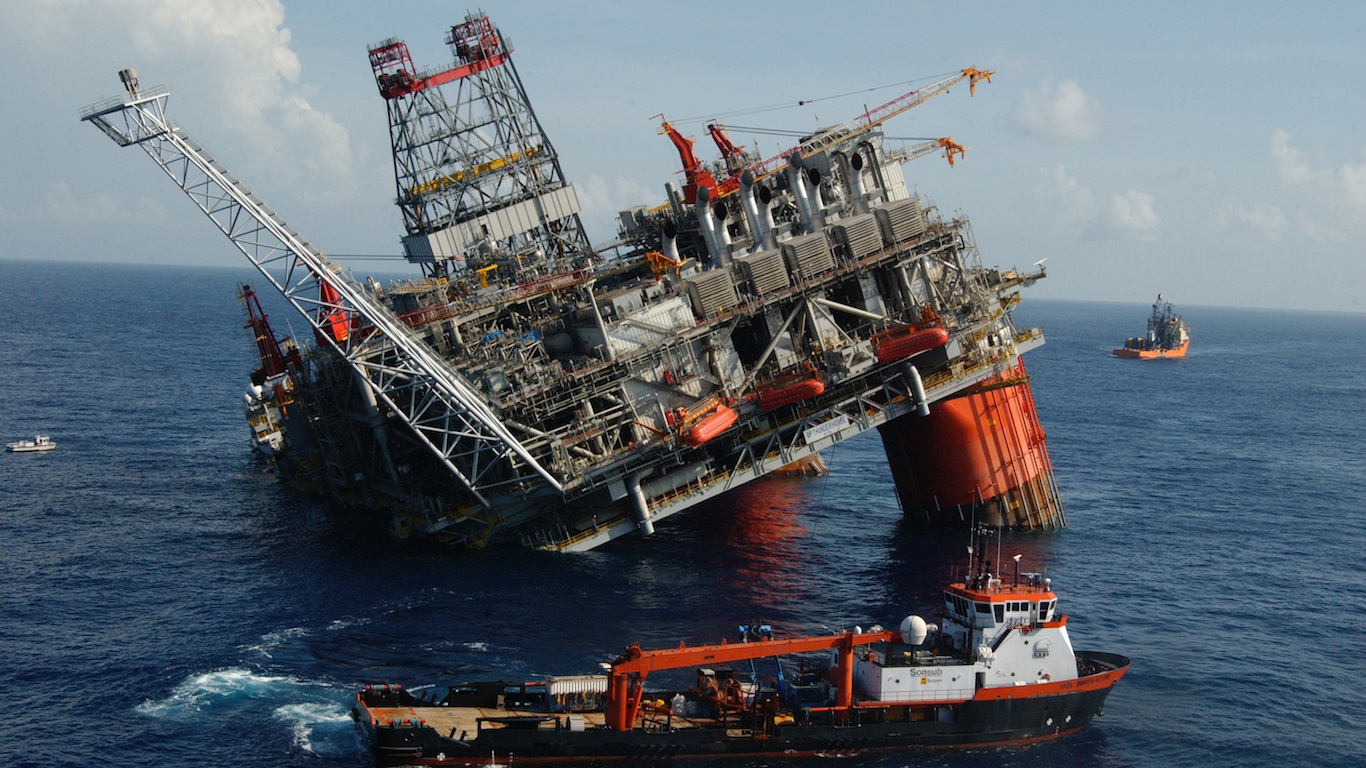Energy
Threat to Gulf Oil and Gas Production Remains High With 2 Months Left in Hurricane Season

Published:

Just because we have not been reading about hurricanes much this summer does not mean that no news is good news. The 2022 hurricane season, running from June 1 to November 1, still has two more months to go, and the National Oceanic and Atmospheric Administration (NOAA) is sticking by its original forecast that the full 2022 season will see 14 to 20 named storms of which six to 10 could become hurricanes and three to five of those could become major hurricanes with winds in excess of 110 miles per hour.
There have been just three named storms so far this year and no hurricanes. According to NOAA, an average hurricane season produces 14 named storms, seven of which develop into hurricanes and three become major hurricanes. The agency has lowered its odds for an above-normal hurricane season from 65% to 60% but raised its odds of a near-normal season from 25% to 30%. The odds of a major hurricane remain at 10%.
The still-elevated hurricane risk spells a continuing threat to oil and gas production in the Gulf of Mexico and a new threat to liquefied natural gas (LNG) shipments leaving the Gulf for Europe. Already high and volatile energy prices could go even higher, particularly for natural gas, which touched a high of $10 per million BTUs last week.
Energy analysts at RBN Energy wrote in a blog post Monday morning that 90% of U.S. LNG exports originate in the Gulf region. LNG liquefaction terminals averaged about 11 billion cubic feet daily of feed gas volume through May of this year. A fire at Freeport LNG in June cut demand for feed gas by 2 billion cubic feet per day, sending domestic natural gas prices lower but raising LNG export prices. The Freeport LNG facilities will not be back in full operation until the end of November. Because LNG facilities take billions of dollars and two years or so to build, there is no short-term solution to raising LNG production and exports.
At the other end of the supply chain, Bloomberg reports that Germany now expects to reach its goal of filling 85% of its natural gas storage capacity a month earlier than planned. Barring further negative events, Germany’s storage will reach its goal next month instead of at the end of October. That forecast already has shaved 3% from natural gas futures.
Russia is halting deliveries through the Nord Stream pipeline later this week to perform maintenance on the pipeline, and record-high temperatures are expected to moderate, reducing demand for air conditioning and supporting more additions to storage for the coming winter. Europe also imports pipeline natural gas from Norway and Algeria.
S&P Global estimates that Russia will supply about 25% (45 billion cubic meters or around 1.6 trillion cubic feet) of EU gas demand this year, down from 45% (80 billion cubic meters or 2.8 trillion cubic feet) last year. U.S. LNG exports in 2021 totaled 3.56 trillion cubic feet, with Brazil, China, Japan and South Korea the top four destinations, taking nearly half the total. Germany took no U.S. LNG last year while the Netherlands, Spain, France and the United Kingdom were the four main destinations.
The thought of burdening your family with a financial disaster is most Americans’ nightmare. However, recent studies show that over 100 million Americans still don’t have proper life insurance in the event they pass away.
Life insurance can bring peace of mind – ensuring your loved ones are safeguarded against unforeseen expenses and debts. With premiums often lower than expected and a variety of plans tailored to different life stages and health conditions, securing a policy is more accessible than ever.
A quick, no-obligation quote can provide valuable insight into what’s available and what might best suit your family’s needs. Life insurance is a simple step you can take today to help secure peace of mind for your loved ones tomorrow.
Click here to learn how to get a quote in just a few minutes.
Thank you for reading! Have some feedback for us?
Contact the 24/7 Wall St. editorial team.